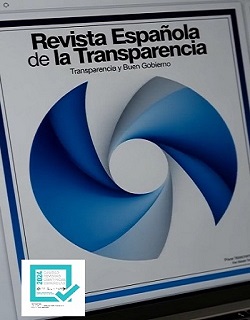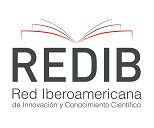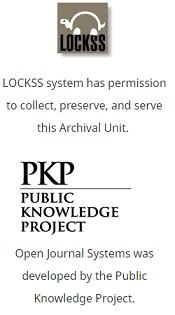The causes of opacity in local governments (Mexico)
DOI:
https://doi.org/10.51915/ret.400Keywords:
administrative opacity, quality of information, accountability, corruptionAbstract
Whether transparency policies are an effective tool to combat corruption remains a matter of debate. Some scholars have argued that making information available is not sufficient for effective transparency. Its effectiveness is moderated, among other factors, by how public officials generate and store information. Based on a qualitative study, this article describes how certain practices that produce opacity emerge, ultimately diminishing the value of information within Mexican municipal governments. First, the concept of opacity is discussed, along with its implications for accountability and anti-corruption efforts. The article then outlines the causes of opacity in municipal governments, specifically describing four types of tactics used by public officials to create opacity and three institutional conditions that enable it. Finally, the article presents several considerations for addressing and reducing opacity.
Downloads
Global Statistics ℹ️
|
0
Views
|
0
Downloads
|
|
0
Total
|
|
References
ALT, J.E.; LASSEN, D.D. y SKILLING, D. 2002. “Fiscal transparency, gubernatorial approval, and the scale of government: Evidence from the states”, State Politics & Policy Quarterly, vol. 2(3):230-250.
ANANNY, M. y CRAWFORD, K. 2018. “Seeing without knowing: Limitations of the transparency ideal and its application to algorithmic accountability”, New Media & Society, vol. 20(3):973-989.
BANNISTER, F. y CONNOLLY, R. 2011. “The trouble with transparency: a critical review of openness in e-government”, Policy & Internet, vol. 3(1):1-30.
BAUHR, M. y CARLITZ, R. 2021. “When does transparency improve public services? Street-level discretion, information, and targeting”, Public Administration, vol. 99(3):500-516.
BAUHR, M.; CZIBIK, Á.; DE FINE LICHT, J. y FAZEKAS, M. 2020. “Lights on the shadows of public procurement: Transparency as an antidote to corruption”, Governance, vol. 33(3):495-523.
BAUHR, M. y NASIRITOUSI, N. 2012. “Resisting transparency: Corruption, legitimacy, and the quality of global environmental policies”, Global Environmental Politics, vol. 12(4):9-29.
BERTOT, J.C.; JAEGER, P.T. y GRIMES, J.M. 2010. “Using ICTs to create a culture of transparency: E-government and social media as openness and anti-corruption tools for societies”, Government Information Quarterly, vol. 27(3):264-271.
BRUNETTI, A. y WEDER, B. 2003. “A free press is bad news for corruption”, Journal of Public Economics, vol. 87(7-8):1801-1824.
CORBIN, J.M. y STRAUSS, A. 1990. “Grounded theory research: Procedures, canons, and evaluative criteria”, Qualitative Sociology, vol. 13(1):3-21.
CUCCINIELLO, M.; PORUMBESCU, G.A. y GRIMMELIKHUIJSEN, S. 2017. “25 years of transparency research: Evidence and future directions”, Public Administration Review, vol. 77(1):32-44.
DAWES, S.S. 2010. “Stewardship and usefulness: Policy principles for information-based transparency”, Government Information Quarterly, vol. 27(4):377-383.
DORN, N.; LEVI, M. y WHITE, S. 2008. “Do European procurement rules generate or prevent crime?”, Journal of Financial Crime.
EDMONDSON, A.C. y MCMANUS, S.E. 2007. “Methodological fit in management field research”, Academy of Management Review, vol. 32(4):1246-1264.
EMERSON, R.M.; FRETZ, R.I. y SHAW, L.L. 1995. Writing ethnographic fieldnotes. Chicago: University of Chicago Press.
FELDMAN, M.S. y MARCH, J.G. 1981. “Information in organizations as signal and symbol”, Administrative Science Quarterly, núm. 26(2):171-186.
FENSTER, M. 2005. “The opacity of transparency”, Iowa Law Review, vol. 91:885.
FLORINI, A. 2007. The right to know: Transparency for an open world. New York: Columbia University Press.
FOX, J. 2007. “The uncertain relationship between transparency and accountability”, Development in Practice, vol. 17(4-5):663-671.
GARUD, R. y RAPPA, M.A. 1994. “A socio-cognitive model of technology evolution: The case of cochlear implants”, Organization Science, vol. 5(3):344-362.
GASSER, L. 1986. “The integration of computing and routine work”, ACM Transactions on Information Systems, vol. 4(3):205-225.
GLASER, B.G. y STRAUSS, A.L. 1967. The discovery of grounded theory: Strategies for qualitative research. Chicago: Aldine.
GRIMMELIKHUIJSEN, S. 2012. “A good man but a bad wizard. About the limits and future of transparency of democratic governments”, Information Polity, vol. 17(3-4):293-302.
HARRISON, T.M. y SAYOGO, D.S. 2014. “Transparency, participation, and accountability practices in open government: A comparative study”, Government Information Quarterly, vol. 31(4):513-525.
HEALD, D.A. 2006. “Varieties of transparency”, en HOOD, C. y HEALD, D.A. (eds.), Transparency: The key to better governance? Oxford: Oxford University Press, pp. 25-43.
HOOD, C. y HEALD, D.A. (eds.) 2006. Transparency: The key to better governance? Oxford: Oxford University Press.
KOLSTAD, I. y WIIG, A. 2009. “Is transparency the key to reducing corruption in resource-rich countries?”, World Development, vol. 37(3):521-532.
MARGETTS, H. 2006. “Transparency and digital government”, Proceedings of the British Academy, vol. 1:197-210.
MEIJER, A. 2009. “Understanding modern transparency”, International Review of Administrative Sciences, vol. 75(2):255-269.
MEIJER, A. 2013. “Understanding the complex dynamics of transparency”, Public Administration Review, vol. 73(3):429-439.
MEZA, O. y PÉREZ-CHIQUÉS, E. 2021. “Corruption consolidation in local governments: A grounded analytical framework”, Public Administration, vol. 99(3):530-546.
MICHENER, G. y BERSCH, K. 2013. “Identifying transparency”, Information Polity, vol. 18(3):233-242.
ORLIKOWSKI, W.J. 2000. “Using technology and constituting structures: A practice lens for studying technology in organizations”, Organization Science, vol. 11(4):404-428.
PÉREZ-CHIQUÉS, E. y MEZA, O. 2021. “Trust-based corruption networks: A comparative analysis of two municipal governments”, Governance, vol. 34(4):1039-1056.
PINCH, T.J. y BIJKER, W.E. 1984. “The social construction of facts and artefacts: Or how the sociology of science and the sociology of technology might benefit each other”, Social Studies of Science, vol. 14(3):399-441.
PRAT, A. 2006. “The more closely we are watched, the better we behave?”, en HOOD, C. y HEALD, D.A. (eds.), Transparency: The key to better governance? Oxford: Oxford University Press, pp. 91.
ROBERTS, A. 2006. Blacked out: Government secrecy in the information age. Cambridge: Cambridge University Press.
SPRADLEY, J.P. 1979. The ethnographic interview. New York: Holt, Rinehart and Winston.
STOHL, C.; STOHL, M. y LEONARDI, P.M. 2016. “Managing opacity: Information visibility and the paradox of transparency in the digital age”, International Journal of Communication, vol. 10:15.
VENARD, B. y TSHERING, K. 2021. “Barriers to transparency in Bhutan’s public administration: A new typology of opacity”, Public Administration and Development, vol. 41(4):203-216.
WEITZ-SHAPIRO, R. y WINTERS, M.S. 2017. “Can citizens discern? Information credibility, political sophistication, and the punishment of corruption in Brazil”, The Journal of Politics, vol. 79(1):60-74.
WINTERS, M.S. y WEITZ-SHAPIRO, R. 2013. “Lacking information or condoning corruption: When do voters support corrupt politicians?”, Comparative Politics, vol. 45(4):418-436.
Downloads
Published
How to Cite
Issue
Section
License
Copyright (c) 2025 Spanish Journal of Transparency

This work is licensed under a Creative Commons Attribution-ShareAlike 4.0 International License.
The Spanish Journal of Transparency is committed to free access and unrestricted use of its information and digital resources. The open access policy is materialized in:
- Free, free and universal access.
- The authors and the Journal grant any potential user the right to use, copy or distribute the content in an unlimited and irrevocable manner, with the sole condition of recognizing the authorship.
- The electronic documents corresponding to the content of the Journal are included in digital format to allow free access.

















